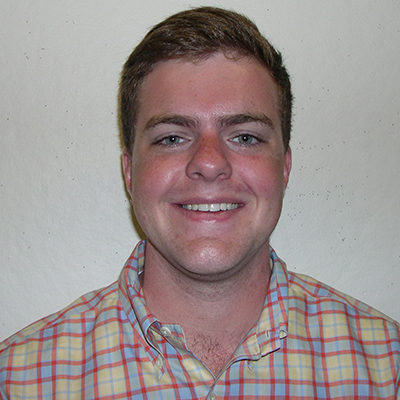Austin Ferguson interned with our Healthcare Group during the summer of 2016 and contributed to “You Are Here: Wendy’s Welcome to the Emergency Department.” Here, he shares some of his experiences.
During my internship last summer, I had the opportunity to join the “Wendy’s Welcome” video team. When I joined the team, the core team had been working on the video for several months and had already nailed down the workflow and technique for animating the scenes. Therefore, my main role was compiling, replicating and digitizing the analog content created by myself or other designers in the office. I was astounded by the work the team had already produced up to that point, and the skills that others were able to bring to the project. My portion of the work focused on synthesizing drawings completed by multiple people into a single look and feel for the video.

One of my main tasks early on was to create the base files for new digital “puppets” of Wendy’s character that would be used throughout the video. Wendy was simply standing for the initial puppet, but the team wanted to incorporate poses where she would be sitting cross-legged, sitting on a ledge and leaning against a wall. I feel the multiple poses and Wendy’s movement throughout the video adds to the authenticity of the project for kids who will be watching it and can identify with another child who moves, fidgets and cannot sit still. One of the designers at PAYETTE created some amazing hand sketches for these new poses that I then turned into a digital format through Adobe Illustrator. Almost every part of the Wendy puppet existed on its own layer within Illustrator to allow the animators to manipulate easily her actions throughout the video. The hardest part of creating the multiple poses was maintaining a level of consistency and continuity. I was constantly tweaking small details of the digital drawings and getting feedback from other team members to ensure she didn’t look too different from the original pose, and that she had a natural feel.

My other task for the project was creating many of the images of toys, people and equipment seen throughout the video. The team decided later on in the process that these images should have a rougher, sketchier feel as opposed to the hard-lined vector drawings we used to create Wendy. This decision required us to go back and simplify some of the hand sketches we deemed as too detailed for the aesthetic that we were trying to achieve. Often we scanned hand sketches and punched them up with color in Adobe Photoshop. This was a straightforward process, but it taught me a lot about how simple hand drawings were just as effective at telling a story and did not pale in comparison to the hard-lined drawings of Wendy. The process was also a fun exercise to stretch my creativity at times and work on a project outside the built environment that would still create a positive impact on healthcare.
The significance of the project and the positive responses to the video has been extremely inspiring for me. I am finishing my final year in Clemson University’s Architecture + Health graduate program, and have gained a lot of exposure to the impact architecture has on healthcare. However, this project has shown me how there are opportunities to create positive change through a medium other than buildings and physical space. My experience working on this video caused me reconsider how the spaces we design are perceived by all patients, particularly children. I am very glad for the opportunity to work on this video because it served as both a learning experience and an opportunity to work on a project medium that was unfamiliar to me.
Related:
Bringing Lines to Life
Animating Architecture
Patient View Institute Recognizes “Wendy’s Welcome to the ED”
Wendy’s Theme: Creating the Musical Score
Compositing Animation, Video and Drawings


